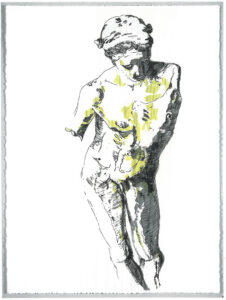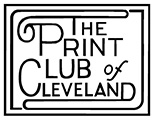 Apollo (Ascendant), is the Print Club of Cleveland’s Publication No. 97 for the year 2019.
Apollo (Ascendant), is the Print Club of Cleveland’s Publication No. 97 for the year 2019.
Ohio-based artist Michael Loderstedt based the print on studies he made of the CMA’s Apollo the Python Slayer, attributed to Praxiteles (2004.30). In the print, he shows the Apollo as an artifact, vulnerable to the ravages of time as seen from a viewpoint looking down. At the same time, the vertical orientation of the print recalls the sculpture’s original function as a Greek god.
Artist Michael Loderstedt is Associate Professor of Fine Arts as well as the Division Coordinator for the School of Arts at Kent State and has also taught at the College of Wooster. He has exhibited at the Akron Art Museum, SPACES, the Cleveland Center for Contemporary Art, and the Cleveland Museum of Art May Show. Loderstedt received a BFA from East Carolina University in Greenville and MFA from Kent State University.
By Darlene G. Michitsch
Apollo (Ascendant), 2018. The Print Club of Cleveland Publication No. 97 for 2019.
Michael Loderstedt (American, b. 1958). Color screenprint on Rives BFK paper; image: 76 x 30.2 cm (29 15/16 x 11 7/8 in.); sheet: 76.8 x 57 cm (30 1/4 x 22 7/16 in.). The Cleveland Museum of Art, Gift of The Print Club of Cleveland 2019.247
